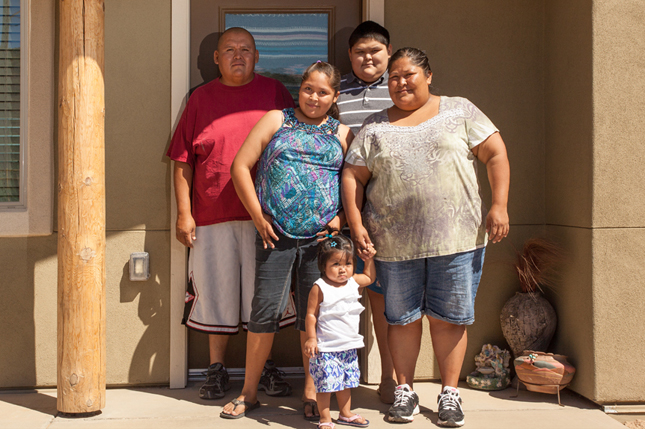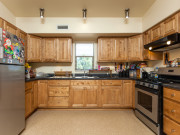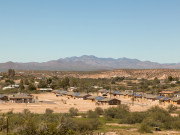It’s been almost a year since Michelle J., her husband, Harry, and their two children, Jerwin and Amber, moved into their new home on the San Carlos Apache Reservation in San Carlos, Ariz. Her family appreciates the heating and cooling systems, ceiling fans, added space and privacy, the sense of community and peace of mind above all, she said.
“It’s kind of like a relief that we have this house,” Michelle said. “It’s beautiful the way we are living. There is a lot of light.”
Michelle’s three-bedroom, two-bathroom home is part of the San Carlos Homes VI project, developed by the San Carlos Housing Authority, which was completed last year. The housing authority built 16 new homes in the new Tulapai Flats subdivision and rehabilitated another 25 homes within the Tufa Stone subdivision, thanks to a 2012 Low Income Housing Tax Credit (LIHTC) award of $794,712 from the Arizona Department of Housing (ADOH).
Travois worked with the San Carlos Housing Authority to submit the LIHTC application, design the new homes, monitor construction and rent the homes to qualified families and continues to ensure the project remains in compliance with all program requirements.
The Low Income Housing Tax Credit program has made an enormous difference in Michelle’s family’s life.
At their previous home, spiders and sugar ants plagued Michelle’s children, and the home’s heating and cooling were inadequate.
“Before we moved into this house, my son would wake up in his bed, and there would be a lot of those sugar ants on his bed,” Michelle said.
With their new home, “He says, ‘Mom, I don’t have to worry about stuff crawling on me. I have my own privacy, my own room’,” she said.
The San Carlos Apache Reservation is located in southeastern Arizona, and the hottest part of the summer brings 100-degree temperatures. Winter temperatures consistently hover around freezing.
“Now since we have the [air conditioning], it cools it down inside,” she said. “Sometimes it gets really cold with the ceiling fan. In the winter, the heater was running good. We didn’t have to worry about being cold at night.”
Michelle’s home, like all of the 41 homes in the project, generates its own electricity, created by solar panels on each roof and a 3-kilowatt solar photovoltaic system. Lower utility bills, energy-efficient appliances and low-flow water fixtures are added benefits.
The location of the home is also better for Michelle’s family, she said.
“It’s closer to a church we go to,” she said. “I was raised in the area, and I feel comfortable where I’m living, where families are in the area. We know each other, the people that live in the area, the neighbors. It feels much better. I’m not away from where I was raised.”
Michelle’s family enjoys the sense of community — the neighborhood families look out for each other and spend time together. In addition to new and rehabilitated homes, the project also added a community building, a playground and a half-court basketball court for community members.
“We go for walks in the area,” Michelle said. “All the kids, we get together, and we do our walks. Teenagers are walking now.”
“Everyone knows one another. All the kids — mainly in the summer — they get together,” she said.
The other parents know their kids are OK when Michelle is outside watching them, she said.
The community has changed because of the Low Income Housing Tax Credit program.
“It’s seeing everyone get excited for new homes,” Michelle said.
More homes are still needed on the San Carlos Apache Reservation and across Indian Country. Overcrowding in existing homes is common. At the time the San Carlos Housing Authority applied for tax credits in 2012, the waiting list for new homes stood at 150 households.
“I’ve noticed there are a lot of people – like my cousin – that have about 15 people who live in one house,” she said. “A lot of people are on the waiting list. There are people out there who live with so much family, and they need homes.”
Michelle is grateful for the opportunity to live in her new, affordable, energy-efficient home.
“We just enjoy where we are living now. Things are much easier,” she said.





